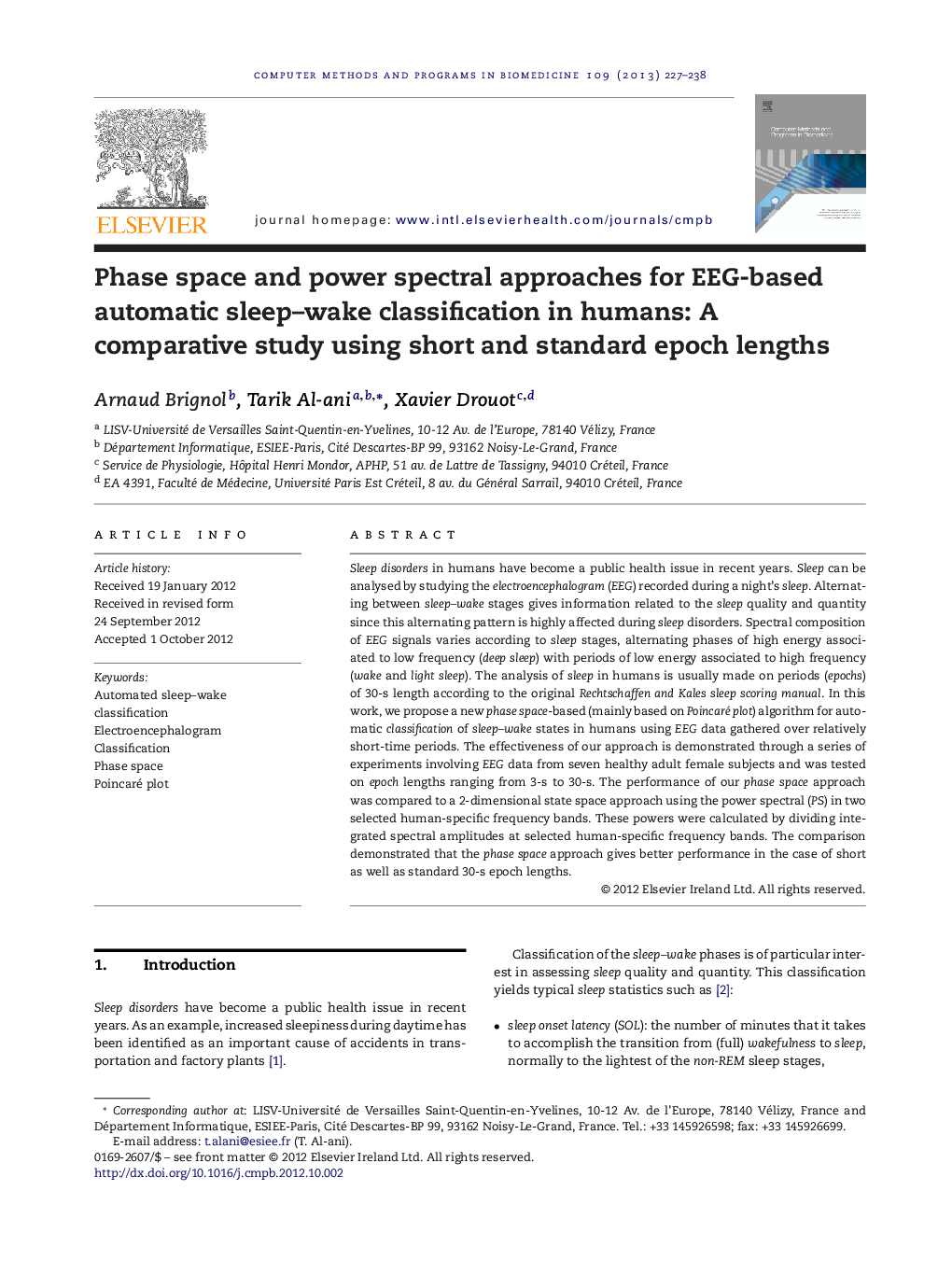| Article ID | Journal | Published Year | Pages | File Type |
|---|---|---|---|---|
| 469020 | Computer Methods and Programs in Biomedicine | 2013 | 12 Pages |
Sleep disorders in humans have become a public health issue in recent years. Sleep can be analysed by studying the electroencephalogram (EEG) recorded during a night's sleep. Alternating between sleep–wake stages gives information related to the sleep quality and quantity since this alternating pattern is highly affected during sleep disorders. Spectral composition of EEG signals varies according to sleep stages, alternating phases of high energy associated to low frequency (deep sleep) with periods of low energy associated to high frequency (wake and light sleep). The analysis of sleep in humans is usually made on periods (epochs) of 30-s length according to the original Rechtschaffen and Kales sleep scoring manual. In this work, we propose a new phase space-based (mainly based on Poincaré plot) algorithm for automatic classification of sleep–wake states in humans using EEG data gathered over relatively short-time periods. The effectiveness of our approach is demonstrated through a series of experiments involving EEG data from seven healthy adult female subjects and was tested on epoch lengths ranging from 3-s to 30-s. The performance of our phase space approach was compared to a 2-dimensional state space approach using the power spectral (PS) in two selected human-specific frequency bands. These powers were calculated by dividing integrated spectral amplitudes at selected human-specific frequency bands. The comparison demonstrated that the phase space approach gives better performance in the case of short as well as standard 30-s epoch lengths.
